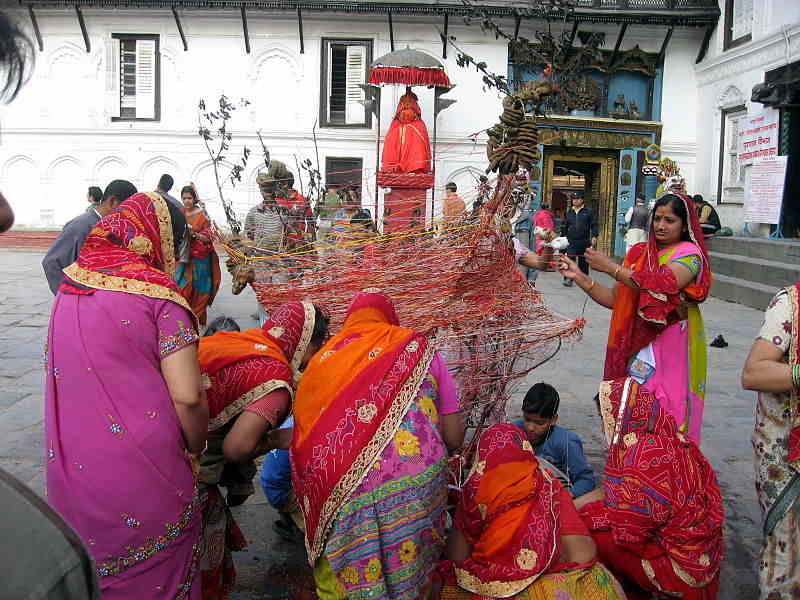Think of colours – varied and vibrant – and Holi is the first imagery that pops up. Even though the festival of love and colours emanated from India, it has spread all over the world. This spread is thanks to the Indian diaspora and also the fact that the world at large loves colours!
According to legend Holi and Holika bonfire signify triumph of good over evil. King Hiranyakashipu on earning a boon which gave him special powers became arrogant and insisted on being worshipped as God. His son Prahlada, a staunch devotee of Lord Vishnu refused and was subjected to innumerable tortures. He was tricked by his aunt, Holika to sit on the burning pyre with him as she was immune to fire because of a cloak. Prahlada with full confidence in the Almighty agreed, and while the cloak covered him, Holika got burnt!
The festival marks the advent of spring after the bitter winter chill. It is an expression of the blossoming of love, regeneration, meeting friends and foes alike, playing and laughing, forgetting and forgiving bitterness, and healing relationships.
Holi falls in the month of Phalguna in the Hindu calendar. The first evening is called Holika Dahan while the following day is called Holi. In different regions it is also called Dol Purnima, Dhuleti, Dhulandi, Ukuli, Manjal Kuli, Yaosang, Shigmo or Phagwah.
Besides the subcontinent, Holi is popular in other countries around the world. These include Guyana, Suriname, Trinidad and Tobago, Mauritius, South Africa, Malaysia, Fiji, the United Kingdom, the United States, Canada, Australia, the Netherlands, and New Zealand among others.
Here is how it is celebrated in some of these countries.
Nepal
India’s neighbour Nepal sees Holi celebrations almost on the lines of what is done here. People throw colourful powder and water balloons called ‘lolas’ at each other in a festival that often lasts the whole week.
On Holi’s first day in Nepal, a ceremonial bamboo pole called a chir is erected. People tie strips of cloth to the pole as good luck charms. It is left there till the end of the festivities where it is added to a bonfire.
Mauritius
Boasting of a very large Indian-origin population (nearly 70 per cent), the island of Mauritius witnesses Holi being celebrated with a lot of gaiety and enthusiasm.
It is an official holiday in the country and therefore people get all the time to make merry and drench themselves in the spirit of Holi and of course, coloured water.
Hindus perform the tradition of Holika Dahan or lighting of bonfire on the eve of Holi and the next day sees revelry with colours and water, and exchange of good wishes and sweets.

Holi celebrations in London,UK (Pic: Courtesy Wikimedia Commons)
United Kingdom
The Indians settled in the United Kingdom don’t miss Holi in the far-off land and enjoy it to the hilt. The celebrations are quite marked, as Indians constitute the second largest ethnic minority in the UK.
Leicester city in Britain is particularly noted for its love for celebrating Indian festivals. Children take the lead in Holi celebrations as they love using spray cans and colour on each other. Holi parades are also carried and evening sees people visiting friends and relatives to exchange sweets and greetings.
Surinam
Hindus constitute 35 to 40 per cent of Surinam’s population, most of whom are descendants of immigrants from Uttar Pradesh and Bihar. Just like India, here too Holika is burnt and colours sprayed at each other. Delicacies prepared and relished during this include bara, gulgula, phulourie, bigany, mango or tamarind chutney, potato ball, prasad, channa, ghoja, mahambhoog, kheer or sweet rice. Besides home delicacies are also prepared and distributed in temples, where Holi celebrations are held.
Trinidad and Tobago
The twin islands have a large Indian diaspora, who initially arrived there around 1845 as contractual labour on sugarcane field. The Indians on these islands exchange sweets and colour each other beyond recognition!
During the celebrations a special type of folk song called Chowtal is sung, in which the music accompaniment is on two instruments. These are dholak (a hand drum) and the majeera (cymbals or percussion instrument). Sung loudly and at a high pitch, these songs induce people to shake and sway with the rhythm.

Holi celebrations in Utah, US (Pic: Courtesy Wikimedia Commons)
United States
Boasting of a large Indian population, US witnesses Holi being celebrated with gaiety, fanfare and fervour.
Different religious organisations and societies formed by the Indians ensure that people enjoy this joyous event, helping them and their next generation to stay close to their cultural roots. Besides such meets, cultural shows, featuring music and dance events are organised.
Cities with a sizeable Indian population see a great gusto in Holi celebations. One of them is New York.
Canada
Every nook and corner of Canada where Indians stay reverberates with Holi celebrations. Both the young and old are active participants and love getting covered with bright colours of green, yellow, red, silver and black. People dance and sing and make merry by exchanging colours, sweets and greetings.




















